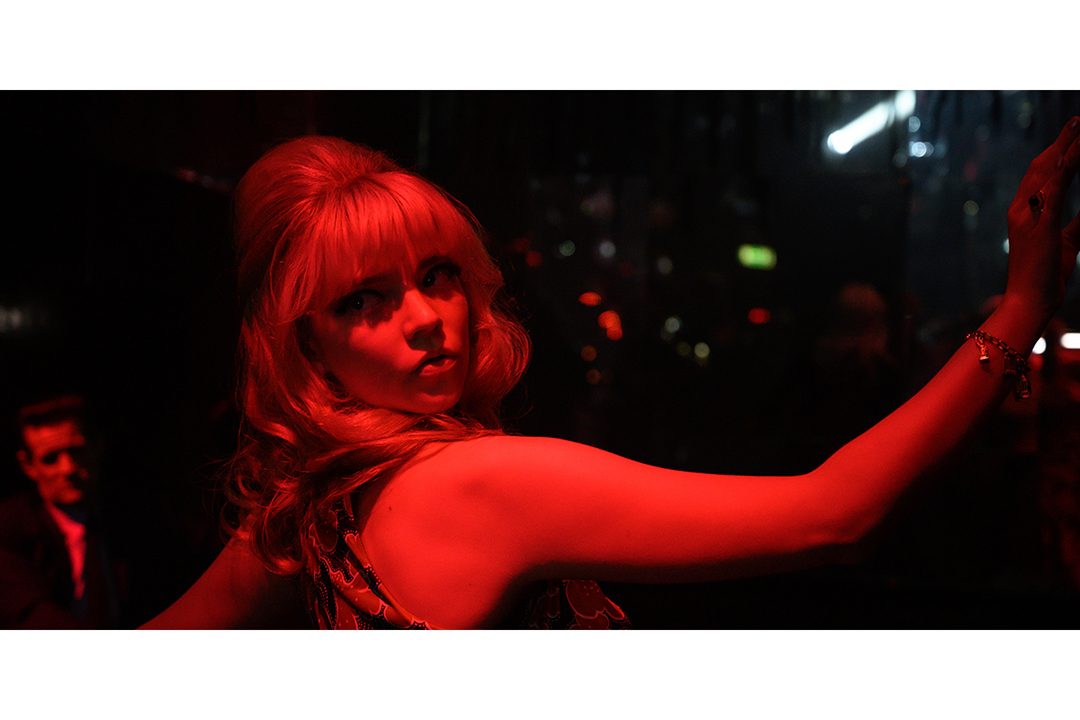This year, I went to all of the Toronto International Film Festival (TIFF) showings I had tickets to without prior knowledge about any of the films. Walking into Roy Thomson Hall to watch Last Night in Soho — a film whose tickets sold out within minutes on the TIFF website — was comparable to stepping inside a nostalgic whirlwind of retro mystery.
The film’s popularity is likely due to the notoriety of actors featured in this film — the beloved Anya Taylor-Joy, most notably of The Queen’s Gambit, plays the intoxicating bar singer Sandie; alongside her is her manager, Jack, played by Matt Smith, former 11th Doctor from the television series Doctor Who.
Directed by Edgar Wright, this anachronistic fantasy thriller follows the life of Eloise, played by Thomasin McKenzie. Eloise is an aspiring fashion designer and lover of all things retro. Residing in the English countryside, her move to London for school is a culture shock, perhaps in more ways than one.
Eloise quickly fails at fitting in with her peers. Because of this, she spends her time getting acquainted with the bedroom she’s chosen to rent in Soho instead of her college dormitory. Flashes of red, white, and blue lights illuminate her face as she attempts to fall asleep; the subtle drone of the diner lights outside her window are enough to suggest a mysterious element of her flat that can’t be pinpointed.
Following this occurrence, the film’s scenes envelope viewers into a warm, comforting blanket. The space is filled with feel-good nostalgia, from Eloise’s familiar first-year university struggles by day to the kaleidoscopic ’60s dreamscape, where she mysteriously travels to at night.
Is this a dream, or is it something more? Either way, Eloise’s visions of the ’60s are enchanting — colourful, enthralling, and psychotronic scenes filled with mystique. Quickly, the aspiring designer starts to draw heavy inspiration from her nighttime adventures, revisiting the world as if it were her own.
In a layered conglomerate of blood and hopelessness, the cinematography lends itself to an incredible mesh between the characters of Eloise and Sandie. Eloise seems to change drastically throughout the film; she changes her hair and fashion to align concerningly closely with Sandie’s, but also faces similar traumas to those that haunt Sandie in her visions. Taylor-Joy’s performance as Sandie is terrifyingly convincing, and Mackenzie’s innocent act discreetly fades as her character’s life melds into that of her friend.
The film has an aura unlike any other, with a style that makes it impossible for viewers to look away. Despite its intoxicating charisma, the film’s ending falls short — it feels like a slightly desperate attempt at explaining the absurdity of the events that occured prior. The beauty of this film is in its absurdity — thus, its every detail need not be explained.
This tradeoff for a more concrete ending that may satisfy the curiosity of the viewer, however, is not the downfall of this film. The realities of the decade bleed through the beautiful cinematography, making for a very honest film that touches on the dark, predatory atmosphere that shadowed 1960s glamour.
To give too much of this film’s plot away would be a disservice to those who wish to experience this stunning film for themselves. The juxtaposition it creates truly makes it worth watching — the melancholy poignancy of Eloise’s time in her dreamscape psychologically haunts us, while its dazzling aesthetic captures the bright and feel-good spirits of Soho.


